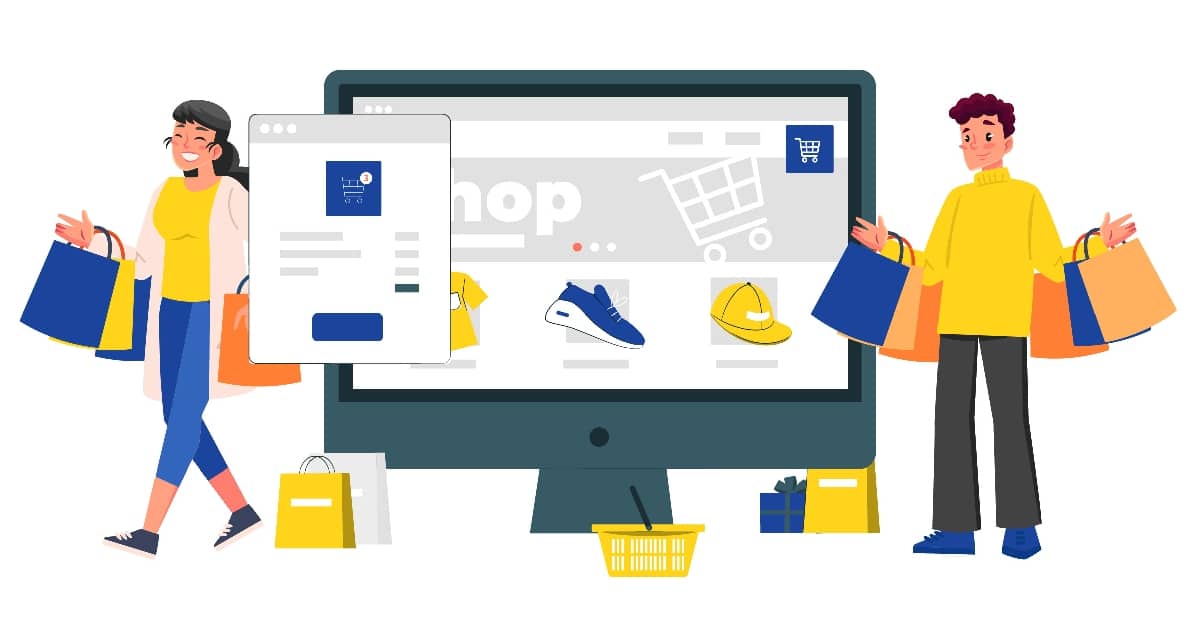Customer retention has become a crucial factor for sustained success and growth. It goes beyond merely acquiring new customers and focuses on building long-term relationships with existing ones. This article will delve into the significance of customer retention, provide a clear definition, and explore the impact of repeat customers on revenue and business growth.
Customer retention is the ability of a business to keep its existing customers engaged, satisfied, and loyal over an extended period. It involves employing strategies to minimize customer churn and maximize customer lifetime value. While customer acquisition is important, retaining customers is equally vital, if not more. By focusing on customer retention, businesses can leverage the trust and loyalty of their existing customers to drive revenue and establish a competitive edge.
The impact of repeat customers on revenue and growth cannot be overstated. Research consistently shows that retaining existing customers is more cost-effective than acquiring new ones. Repeat customers tend to spend more, have a higher average order value, and are more likely to recommend the business to others. Moreover, they contribute to a stable revenue stream, ensuring business sustainability in the long run.
Understanding Customer Behavior

Customer behavior plays a pivotal role in the success of any business. To effectively retain repeat customers, it is crucial to understand the psychology behind customer loyalty and identify the key factors that influence their retention. This section will delve into the psychology of customer loyalty, explore the various factors that contribute to customer retention, and provide relevant case studies and examples showcasing successful customer retention strategies.
The Psychology of Customer Loyalty
Customer loyalty is not merely a result of transactional exchanges but is deeply rooted in psychological factors. Understanding these psychological drivers can help businesses foster stronger connections with their customers and cultivate loyalty. Some key aspects of the psychology of customer loyalty include:
– Emotional connection: Customers often develop a sense of attachment and emotional connection to brands that resonate with their values, beliefs, and aspirations. Building emotional connections through brand storytelling and authentic experiences can significantly enhance customer loyalty.
– Perceived value: Customers seek value beyond the tangible features or benefits of a product or service. They evaluate their overall experience, including factors such as convenience, quality, trust, and the perception of exclusivity. Creating and delivering perceived value can strengthen customer loyalty.
– Trust and reliability: Trust is a cornerstone of customer loyalty. Customers are more likely to stay with a brand they trust and perceive as reliable. Consistently meeting or exceeding customer expectations, delivering on promises, and providing reliable support contribute to building trust.
Factors Influencing Customer Retention
To retain repeat customers, businesses must focus on several key factors that influence customer retention. Implementing effective strategies across these factors can foster loyalty and encourage customers to continue choosing your brand. Here are the main factors to consider:
– Quality products and services: Offering high-quality products or services that consistently meet or exceed customer expectations is crucial for customer retention. Superior quality builds trust and satisfaction, making customers more likely to stay loyal.
– Exceptional customer experience: Providing an exceptional customer experience at every touchpoint is vital. This involves seamless interactions, personalized support, proactive problem-solving, and prompt resolution of issues. A positive experience fosters loyalty and encourages customers to choose your brand over competitors.
– Personalization and customization: Tailoring offerings to meet individual customer needs and preferences can significantly impact customer loyalty. Personalization can range from customized recommendations based on past purchases to personalized communication that acknowledges and appreciates customers as individuals.
– Competitive pricing: While pricing alone may not guarantee customer loyalty, it plays a significant role. Customers appreciate competitive pricing that offers value for their money. Striking the right balance between price and perceived value is essential for customer retention.
– Effective communication and engagement: Establishing open lines of communication and engaging with customers regularly builds trust and loyalty. This includes timely responses to inquiries, personalized marketing messages, and proactive communication to keep customers informed and engaged.
Case Studies and Examples Highlighting Successful Customer Retention Strategies
Numerous businesses have implemented successful customer retention strategies. Let’s explore a few examples:
– HubSpot: HubSpot implemented a customer feedback loop, gathering insights from customers to improve their business. This approach helped them identify areas of improvement, enhance customer satisfaction, and retain their customer base.
– Shopify: Shopify focuses on the goal of customer retention through satisfaction with their services. By ensuring a seamless user experience, addressing customer needs promptly, and providing valuable resources and support, they have fostered strong customer loyalty.
– Delighted: Delighted emphasizes the importance of understanding customer sentiment. By collecting feedback through surveys, they gain insights into customer preferences and pain points, enabling them to improve their offerings and enhance customer retention.
– Amazon: Amazon employs a combination of personalized recommendations, fast shipping, and a comprehensive loyalty program (Amazon Prime) to retain customers. These strategies have contributed to their success in building a loyal customer base.
By studying these case studies and examples, businesses can gain valuable insights into effective customer retention strategies and adapt them to their own industry and target audience.
Building Strong Customer Relationships
Creating a customer-centric culture:
A customer-centric culture is essential for building strong relationships with customers. It involves aligning the entire organization around the needs and preferences of customers. By prioritizing customer satisfaction and putting their needs at the forefront, businesses can create a culture that fosters loyalty and long-term relationships.
Establishing trust and credibility:
Trust is the foundation of any successful customer relationship. To establish trust, businesses must consistently deliver on their promises and provide reliable products or services. Transparency in business practices, clear communication, and ethical behavior are key factors in building trust and credibility with customers.
Effective customer service and support:
Exceptional customer service and support are vital for maintaining strong relationships. Promptly addressing customer inquiries, resolving issues efficiently, and providing personalized assistance contribute to a positive customer experience. Investing in well-trained and empathetic customer service representatives can significantly impact customer satisfaction and loyalty.
Loyalty programs and rewards:
Implementing loyalty programs and rewards can be an effective strategy for nurturing customer relationships. These programs incentivize customers to repeat purchases and engage with the brand. By offering exclusive benefits, discounts, or personalized rewards based on customer preferences, businesses can foster loyalty and increase customer retention.
Utilizing customer feedback and insights:
Customer feedback is a valuable resource for understanding customer needs, preferences, and pain points. Actively seeking feedback through surveys, reviews, or social media engagement allows businesses to gather insights and make data-driven decisions. By incorporating customer feedback into product development, service improvements, and overall business strategies, businesses can demonstrate their commitment to meeting customer expectations.
Personalized marketing and targeted promotions:
Personalization is key to engaging customers and creating a tailored experience. By leveraging customer data and segmentation, businesses can deliver targeted marketing campaigns and promotions. Personalized emails, product recommendations based on browsing history, and customized offers make customers feel valued and understood. This level of personalization enhances the overall customer experience and fosters loyalty.
Enhancing the Customer Experience

Seamless and Convenient Purchasing Process:
A seamless and convenient purchasing process is crucial for providing a positive customer experience. Businesses should focus on simplifying the steps involved in making a purchase, from browsing products to completing the transaction. Streamlining the checkout process, optimizing website navigation, and offering secure payment options contribute to a seamless and hassle-free experience for customers.
Omnichannel Customer Experience:
An omnichannel customer experience ensures consistent and cohesive interactions across multiple channels. Today’s customers expect to engage with businesses through various touchpoints such as websites, mobile apps, social media, and physical stores. By integrating these channels and providing a seamless experience, businesses can meet customers where they are and deliver personalized and consistent interactions at every stage of their journey.
Investing in Technology and Automation:
Leveraging technology and automation can significantly enhance the customer experience. Implementing advanced customer relationship management (CRM) systems, chatbots, and artificial intelligence (AI) solutions can automate repetitive tasks, provide instant support, and deliver personalized recommendations. This allows businesses to scale their operations, improve response times, and offer tailored experiences that cater to individual customer preferences.
Streamlining Customer Support and Query Resolution:
Efficient customer support and quick query resolution are essential for enhancing the customer experience. Businesses should invest in robust support systems that enable customers to easily reach out for assistance. This includes offering various communication channels such as live chat, email, or phone support. Implementing ticketing systems and knowledge bases can help streamline customer inquiries, ensuring timely and accurate responses.
Providing Proactive and Preemptive Solutions:
Going beyond reactive support, businesses can provide proactive and preemptive solutions to enhance the customer experience. By anticipating customer needs and addressing potential issues before they arise, businesses can demonstrate their commitment to customer satisfaction. This can be achieved through features like proactive notifications, personalized recommendations based on customer behavior, and predictive analytics to identify potential pain points.
Nurturing Customer Engagement
Nurturing customer engagement is crucial for businesses to build strong relationships with their customers and ensure repeat business. Here are some strategies to foster customer engagement:
1. Creating meaningful interactions and connections: Personalize interactions with customers by addressing them by name and showing genuine interest in their needs. Encourage open communication and provide timely responses to inquiries or feedback.
2. Social media and online community engagement: Maintain an active presence on social media platforms relevant to your target audience. Share valuable content, respond to comments and messages, and participate in discussions. Cultivate a sense of community by encouraging customers to share their experiences and connect with each other.
3. Content marketing and thought leadership: Create and share high-quality content that provides value to your customers. This can include blog posts, articles, videos, infographics, or podcasts. Establish your brand as an authority in your industry by sharing valuable insights and expertise.
4. Email marketing and newsletters: Build a subscriber list and regularly send out engaging newsletters or email campaigns. Tailor the content based on customers’ preferences and interests. Provide updates about new products, promotions, industry news, and exclusive offers to keep customers engaged and informed.
5. Surveys, polls, and feedback mechanisms: Seek feedback from your customers through surveys and polls. Ask for their opinions on various aspects of your business, such as product satisfaction, customer service experience, or suggestions for improvement. Act on their feedback and demonstrate that their opinions matter.
By implementing these strategies, you can foster customer engagement and create a loyal customer base. Remember to continuously monitor and analyze the results to refine your approach and provide the best possible experience for your customers.
Measuring and Improving Retention Rates
Measuring and improving retention rates is crucial for businesses to ensure repeat customers. Here are key aspects to consider:
Key Metrics for Measuring Customer Retention:
– Customer Retention Rate (CRR): This metric calculates the percentage of customers a business is able to retain over a specific period.
– Repeat Purchase Rate: It measures the percentage of customers who make more than one purchase from the business.
– Churn Rate: This metric indicates the percentage of customers who stop doing business with the company over a given period.
Analyzing Customer Churn and Attrition:
– Identify Reasons: Analyze why customers are leaving or becoming inactive. Is it due to poor product quality, lack of engagement, or better offers from competitors?
– Customer Surveys: Conduct surveys to gather feedback and understand the customer experience, satisfaction levels, and reasons for churn.
– Customer Journey Analysis: Track the customer journey to identify pain points or areas where customers may disengage.
Strategies for Improving Retention Rates:
– Enhance Customer Experience: Focus on delivering exceptional service, personalized interactions, and timely support to foster loyalty.
– Loyalty Programs: Implement loyalty programs that reward customers for their repeat business, such as points, discounts, or exclusive perks.
– Targeted Communication: Segment your customer base and tailor communication to provide relevant offers, recommendations, and updates.
– Proactive Customer Engagement: Anticipate customer needs, address concerns promptly, and offer proactive solutions to enhance satisfaction.
– Continuous Improvement: Regularly review and refine your products, services, and processes based on customer feedback and market trends.
Leveraging Data and Analytics for Insights:
– Customer Segmentation: Analyze customer data to segment your audience based on demographics, behavior, or purchase history for personalized strategies.
– Customer Lifetime Value (CLV): Calculate the value a customer brings to your business over their lifetime, allowing you to prioritize retention efforts.
– Predictive Analytics: Use historical data and predictive models to identify customers at risk of churn and take proactive measures to retain them.
Continuous Monitoring and Optimization:
– Monitor Key Metrics: Continuously track customer retention metrics and use them as benchmarks for improvement.
– A/B Testing: Experiment with different retention strategies, offers, and communication channels to identify the most effective approaches.
– Iterate and Adapt: Regularly review the effectiveness of your retention strategies, gather feedback, and make data-driven adjustments to optimize results.
By measuring retention rates, analyzing churn factors, implementing effective strategies, leveraging data insights, and continually optimizing efforts, businesses can increase customer loyalty
In conclusion, ensuring repeat customers is crucial for the success of your business. Customer retention not only leads to increased profits but also helps in creating brand advocates who spread positive word-of-mouth. I encourage you to implement these strategies to cultivate a loyal customer base and ensure the long-term success of your business.
FAQs
Customer retention is crucial for small businesses for several reasons. It helps them establish a loyal customer base, reduce marketing costs, increase revenue from repeat purchases, and gain a competitive advantage in their niche.
Customer retention can be measured through various key performance indicators (KPIs) such as customer churn rate, repeat purchase rate, customer lifetime value (CLV), and net promoter score (NPS). These metrics provide insights into the effectiveness of your retention strategies.
Social media platforms offer an opportunity to engage with customers, gather feedback, and build relationships. By leveraging social media, businesses can strengthen customer loyalty, address concerns, and provide timely updates or offers to their customer base.
Customer support plays a critical role in customer retention. Prompt and efficient support helps resolve issues, build trust, and enhance the overall customer experience. Positive customer interactions with support representatives contribute to customer satisfaction and loyalty.
Businesses can use customer data to gain insights into preferences, behavior, and buying patterns. This information can be used to personalize experiences, make relevant recommendations, and tailor marketing campaigns, ultimately enhancing customer retention efforts.
The timeline for seeing the effects of customer retention strategies can vary depending on factors such as the nature of the business, customer base, and the specific strategies implemented. Generally, it takes time to build strong customer relationships and see the full impact of retention efforts.
Related articles
- 8 Ways To Get More Reviews From Your Customers Right Now
- 10 Tips To Increase Average Order Value In 2023
- Retention Marketing: 5 Tactics to Keep Customers
- 7 Fundamental ECommerce Growth Marketing Strategies
- How To Solve 4 Common Customer Retention Problems
- Most Effective Ways To Increase Your Conversion Rate
 Anas is our go-to copywriter with a knack for crafting persuasive and high-converting eCommerce landing pages. His passion for words and understanding of consumer psychology helps turn visitors into loyal customers. When he's not refining his copy, Anas enjoys exploring the latest digital marketing trends and experimenting with new writing techniques. His blend of creativity and strategic thinking makes him an indispensable part of our energetic team.
Anas is our go-to copywriter with a knack for crafting persuasive and high-converting eCommerce landing pages. His passion for words and understanding of consumer psychology helps turn visitors into loyal customers. When he's not refining his copy, Anas enjoys exploring the latest digital marketing trends and experimenting with new writing techniques. His blend of creativity and strategic thinking makes him an indispensable part of our energetic team.












